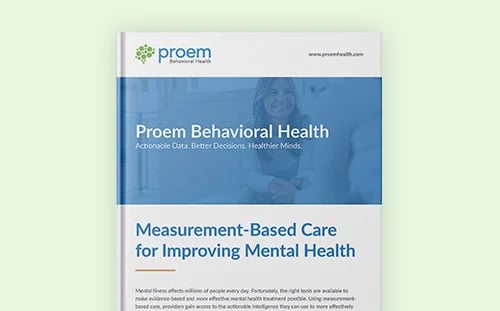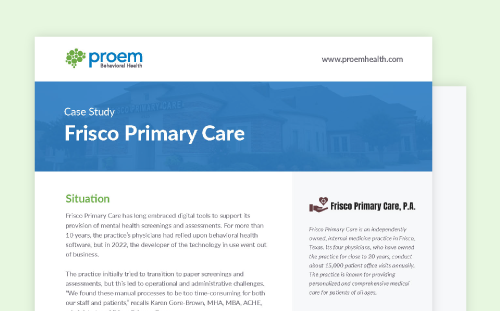Stat+ has published an investigative article written by Olivia Goldhill, “How a depression test devised by a Zoloft marketer became a crutch for a failing mental health system.” In the article, the author details the history of the PHQ-9 depression screener, which, according to the doctors who developed it, was intended to be used to screen and monitor for depression, not make a mental health diagnosis. Despite its intent, as the author writes, the PHQ-9 is “a bedrock of the U.S. mental health system” and is now “used in place of, rather than as a gateway to, thoughtful mental health care."
I would like to thank Goldhill and Stat+ for the impressive work that went into bringing the history and misuse of the PHQ-9 to the forefront. I highly recommend this article to fellow behavioral health professionals and anyone else who may personally administer the PHQ-9 or whose organization administers the questionnaire.
The article stands on its own, so rather than speak to its contents, I want to instead focus on the way forward — the "what do we do now" with this better understanding of how the PHQ-9 has become such a crutch and "one cog in a failing system," as Goldhill writes. A few recommendations as a start:
- We must begin to screen people consistently, properly and comprehensively, and reimburse providers for comprehensive screening. This means going beyond simply recommending screening but rather recommending comprehensive, accurate and effective screening — for all.
- We must universally reimburse clinicians who take the time to conduct a proper, structured interview to get to the root cause of an individual's mental illness. This can positively impact the patient, the clinician, and our health system immediately. A great example was given in this article, highlighting Callie Williams’ struggle with controlling her ADHD. Uncovering the underlying cause of the symptom of depression, ADHD, was not contemplated in her treatment plan, causing significant personal pain and apparent frustration.
- While we don't have a "mental illness X-ray machine," there are currently tools that can be easily accessed and used to obtain accurate results and determine the right path forward for patients. We must get these tools into the hands of clinicians.
More broadly, we must start the dialogue around fixing what is an inherent systemic flaw: the over- and inappropriate reliance on the PHQ-9 and other singularly focused screening tools. How do we look forward and begin a dialogue about proper screening and in-depth clinical decision support mechanisms that can help clinicians get these right answers for their patients?
Let's begin by making sure people who are in need have a chance to succeed in therapy from day one. It starts with proper screening, conducting a structured interview, uncovering what is really happening, confirming this information with the patient, determining what the patient's goals are from therapy, and getting to work to achieve these goals — ultimately beginning to solve the world's mental health crisis.





.png)







